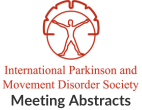Stereotactic surgery targeting on ventral oral posterior/ventral intermediate (Vop/Vim) in patients with upper limb dystonia: Neuronal activity and optimal effective site
Objective: To evaluate the neural activity at the optimal site of ablation or deep brain stimulation (DBS), targeting on caudal Zona incerta (cZi) through ventral…Imaging-based differential diagnosis between multiple system atrophy and Parkinson’s disease
Objective: We aimed to directly compare middle cerebellar peduncle (MCP) width, apparent diffusion coefficient (ADC) value of the putamen and cerebellum, and 123I-metaiodobenzylguanidine (MIBG) myocardial…Early stridor onset predicts survival in multiple system atrophy
Objective: To evaluate the predictive value of stridor and of its latency of onset in a cohort of Multiple System Atrophy (MSA) patients referred to…Orthostatic intolerance and falls in Parkinson’s disease
Objective: Primary objective: to assess the relationship between falls, orthostatic intolerance and orthostatic hypotension (OH) in patients with Parkinson's disease (PD). Secondary objective: to assess…A comprehensive characterisation of the salivary proteome of patients with Parkinson’s disease
Objective: To comprehensively characterise the salivary proteome of patients with Parkinson's disease (PD) and generate potential biomarker candidates for future studies. Background: Saliva may be…1-year clinical outcomes in patients with parkinsonism syndrome with/without type 2 diabetes
Objective: To evaluate clinical outcomes in patients with parkinsonism syndrome with/without type 2 diabetes (T2DM) 1-year after operation due to lower extremity artery disease (LEAD)…Anti-LGI1 encephalitis presenting as a progressive supranuclear palsy-like syndrome
Objective: To describe a patient with a 12 –month history of progressive disorder suggestive of PSP-like syndrome, who was found to have anti-Leucin-rich Glioma Inactivated-1…Quantification of striatal dopamine transporters with [18F]PR04.MZ in patients with progressive supranuclear palsy and Parkinson’s disease
Objective: To evaluate the differences in striatal subregional dopamine transporter loss in Parkinson's disease (PD) and supranuclear palsy (PSP) and the diagnostic value of [18F]PR04.MZ…Atypical Parkinsonian disorders: Insights for a differential diagnosis through the analysis of oculomotor profile in MSA, PSP and CBD patients
Objective: To determine peculiar changes in oculomotor profile that may help in distinguishing atypical parkinsonism with overlapping clinical features. Background: Atypical Parkinsonian disorders (APDs) include…Understanding, predicting, and preventing falls in progressive supranuclear palsy
Objective: To (1) evaluate which factors are associated with increasing falls in Progressive Supranuclear Palsy (PSP), unrelated to freezing; and (2) subsequently develop a predictive…
- « Previous Page
- 1
- …
- 103
- 104
- 105
- 106
- 107
- …
- 207
- Next Page »
